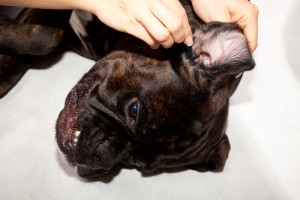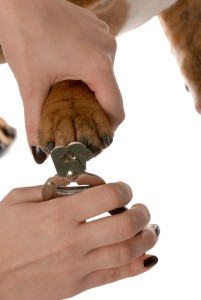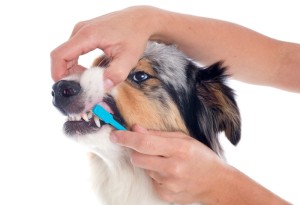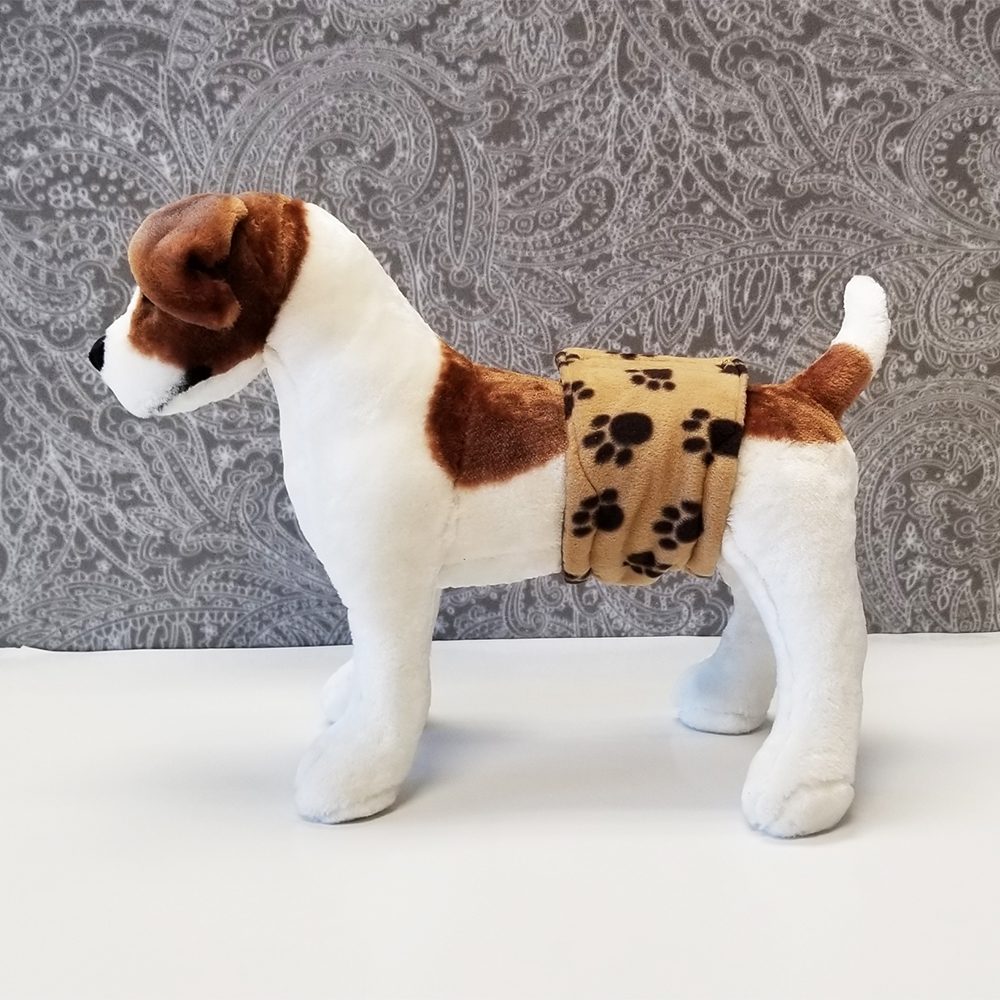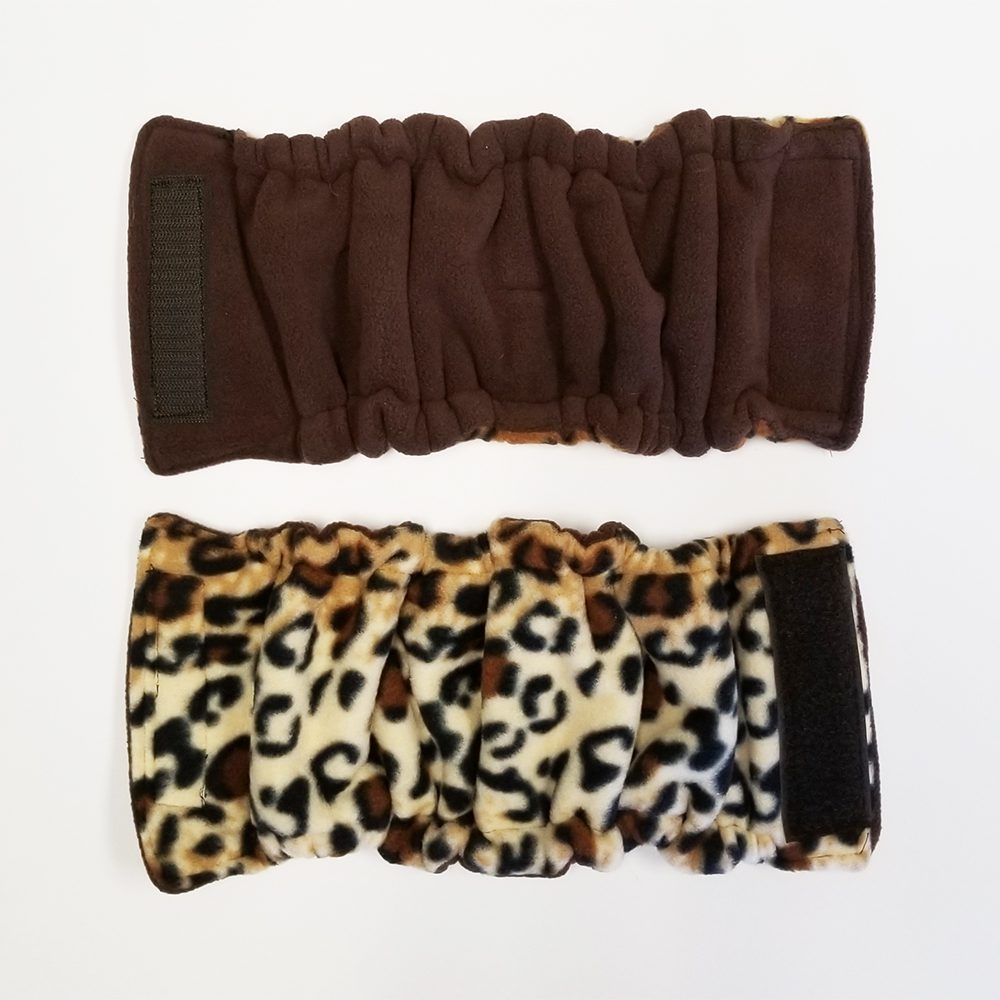Bathing, Ear, Teeth and Nail Care
Bathing
Bathe your dog when he appears to be dirty or doesn’t smell as fresh as you would like. Most dogs need to be bathed only once every few weeks. Use warm (not hot) water and a shampoo made specifically for dogs. Some dogs have allergies to scented shampoos, so make sure the shampoo is mild.
It is often helpful to add a capful or two of shampoo to a cup of water, and sponge the diluted mixture onto your dog. Be careful of the eye area, as some shampoos can cause burning if they get into your dog’s eyes. Also be careful not to get water into your dog’s ears, as moist ears can lead to an ear infection. Rinse the shampoo thoroughly out of your dog’s coat with plenty of clean water so the shampoo residue does not cause itching.
Short-haired dogs will not need a conditioner, but most long-haired dogs will benefit with the use of a dog shampoo conditioner to prevent tangles and make the coat easier to brush through. For short-haired dogs, a natural bristle brush works well. Long-haired dogs can be combed with a wide-tooth comb to remove tangles before drying the hair. Some breeds, such as Poodles, benefit from the use of a pin brush and blow dryer to fluff and completely separate the hair while drying. Hairless dogs need special oils on the skin to prevent drying and breakouts.
Young puppies can be bathed after the age that they are eating solid food on their own. Before that age, spot cleaning with a damp rag is best. When bathing your puppy, be sure to use warm (not hot) water and dry him thoroughly so he does not catch a chill. If you use a blow dryer, make sure it is not too hot for your puppy’s sensitive skin.
Ear Care
Most dogs with erect ears are less likely to be prone to ear infections due to the constant air circulation that an upright ear affords. Dogs with folded or floppy ears can be more prone to infections due to limited air circulation in the ear. Any dog that is in an environment that keeps the ears moist from humidity or swimming, or dogs that run through the woods or brush and get debris and dirt in their ears are also more prone to infections. Regardless if your dog’s ears are upright or floppy, regular ear care is a necessity.
It is a good idea to check weekly for any signs of dirt or other foreign matter that may be caught in the ear. If the ear appears to be dirty inside, you can cleanse it with a mild ear-wash solution recommended by your veterinarian. For general cleaning, moisten a cotton ball with a mild soap-and-water solution and wipe only the visible part of the ear. Be gentle, for the ear is sensitive and could easily bleed. You can use a cotton ear swab to remove dirt from the visible creases. Any indication of redness, swelling or foul odor should be checked by your veterinarian, as it can signal an ear infection. Dogs that scratch their ears frequently and shake or hold their heads to one side while whining or appearing to be in pain should be checked as soon as possible by a veterinarian. Ear infections are painful, can spread and can be very serious. One of our favorite products for cleaning and maintaining ear health is a product called Eco Ears, made by Vet Organics.
Trimming the Nails
It is wise to get into the habit of trimming your dog’s nails on a regular basis. Your dog will become used to this procedure if you perform it regularly rather than waiting until his nails are much too long. It is a good idea to have the assistance of someone who can hold the dog still while you trim his nails. Make sure that your nail clippers are sharp, and although most any clipper will work on a puppy, when your dog is grown you will need a clipper made for a large-breed dog. Some people prefer a dremmel-like electric tool that uses a round, rotating sanding bit to grind the nail.
While an assistant holds the dog, place his paw in your hand and hold it firmly yet gently. Some dogs will pull back and fight more than others during this procedure, so be prepared. If using a nail clipper, place the nail clipper where it will cut just past, not into the quick, or pink part of the nail. The quick is where the blood supply of the nail is contained, and if you cut into it the nail will not only bleed profusely, it will be painful to the dog. Make sure that your nail clipper is positioned away from the quick before you begin your cut. Press quickly and firmly to cut the nail. When trimming nails, it is imperative that you have styptic powder nearby, which will stop bleeding in case you accidentally cut into the quick. It is very difficult to stop a bleeding nail without styptic powder.
If you choose to use an electric sanding device, follow the directions carefully. Most of the devices designed for animals gently sand the nail, so for thick or long nails several trimming sessions could be necessary. Plan to sand a little of the nail with each session, and be sure not to cut into the quick of the nail. You should also have styptic powder handy when sanding your dog’s nails in case you accidentally sand into the quick.
We recommend that you trim your dog’s nails every two to four weeks, depending on how quickly your dog’s nails grow. This will make him comfortable with the procedure, and it will ensure that the quick stays toward the back of the nail. If the nails are allowed to grow too long, the quick will grow with them, making trimming more difficult. With some practice, your dog will get used to having his nails trimmed, and you’ll soon be trimming nails like a pro.
Teeth Care
One of the most common problems that dogs face is the buildup of tartar and plaque on their teeth. Left untreated, this buildup can cause bad breath, gum disease and even lead to death in some instances. Introduce your puppy to toys such as nylon chew toys or rope toys made to help remove plaque buildup and keep teeth clean. Even if your dog chews on these toys, it is still important to brush his teeth weekly. Canine toothbrushes and flavored toothpastes are available at pet supply stores. Although your dog may initially fight you in this endeavor, he will eventually become used to it if you make it a regular part of his routine.
Just as humans need to have a dentist clean their teeth to remove plaque that brushing leaves behind, your Ibizan Hound will probably need to have this procedure performed by a veterinarian. Some dogs need their teeth cleaned once a year, while others need a cleaning once every few years. Your veterinarian can tell you if it is time to perform this procedure during your dog’s yearly checkup.
This information is copyrighted and is the property of the author. You may not use any information from this page; however, you may link to this page.



